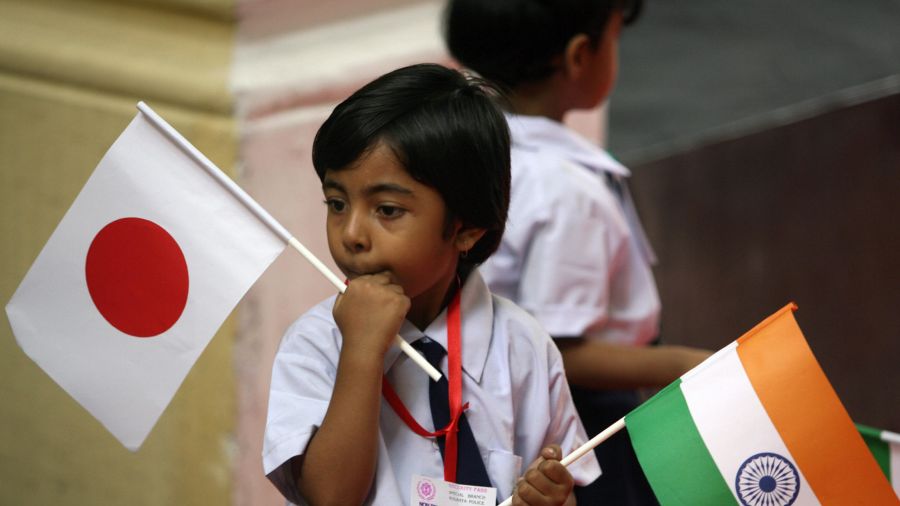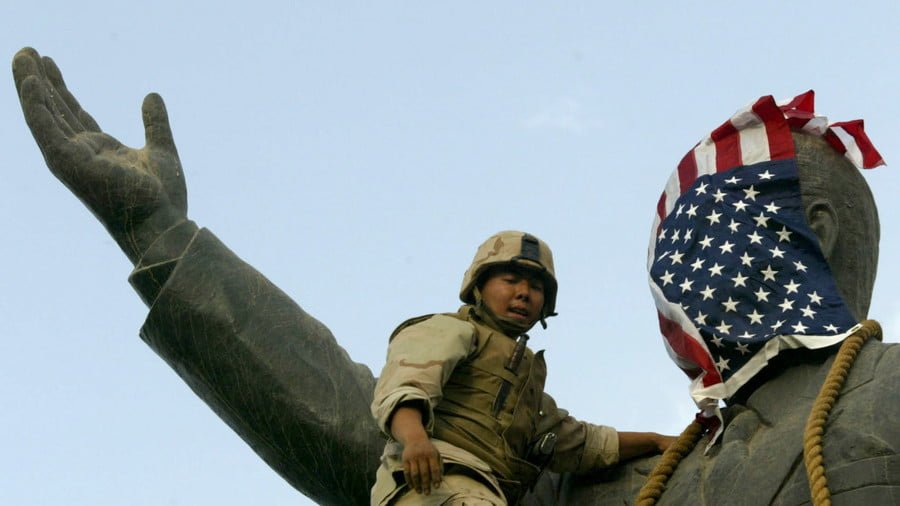India and Japan – a New Asian Alliance?
The phrase “New Asian Alliance” in the headline is not the invention of the present author, but comes from an article by an Indian expert who, to judge by his academic career, has studied the changed strategic relations between China, India and Japan in great detail. And any changes in the strategic relations within this particular triangle of nations will have a considerable impact on the future of the entire Indo-Pacific region. And in the current stage of the Big World Game the focus is shifting towards precisely that region.
Although the US, as the leading world power, is still making its presence in the region very much felt. And all the pomp and circumstance which the host nation has generated in the run-up to Indian Prime Minister Narendra Modi’s visit to the United States only serves to highlight this fact.
Nevertheless, certain low-key developments are taking place on one side of this triangle – between India and Japan, and while they have so far escaped much comment, they will soon be seen as one of the most significant factors in the ongoing transformation of the situation in the Indo-Pacific region. For this reason, NEO has, for several years, regularly devoted space to significant developments in Japanese-Indian relations.
The rapid development of these relations in the last two decades is often attributed to the personal qualities od Narendra Modi, who back in the 2000s served as Chief Minister of Gujarat, one of India’s most important states in all respects. Interestingly, at that time, and almost right up to the beginning of 2014, he was, for some reason, not seen as a desirable visitor to the United States.
In reality, however, the friendship between Japan and India was already evident during the latter’s struggle for independence and was a particularly problematic issue for the British Raj government during World War II. Significantly, the Indian judge at the International Military Tribunal for the Far East dissented from his colleagues’ ruling.
The 2015 trip by Japan’s then Prime Minister Shinzo Abe to India, during which he participated in talks with his Indian counterpart Narendra Modi, was a milestone in the development of relations between the two countries. Since then, the two leaders of the two countries have regularly exchanged visits. In the most recent such visit, this March, New Delhi hosted the current Japanese Prime Minister, Fumio Kishida, who, as foreign minister in Shinzo Abe’s government, had contributed greatly to the development of relations between Japan and India.
So far, the main focus in dealings between the two countries have been in the field of trade and economics – especially Japan’s involvement in the implementation of Indian infrastructure projects. Of the latter, one of the most ambitious is the construction of the Ahmedabad-Mumbai high-speed railway, which when complete will run north to south through almost the whole of western India.
However, India has also made a number of attempts to involve Japanese companies in the implementation of defense projects. For example, in the mid-2010s the two countries discussed the possible supply of Japanese amphibious airplanes for use in maritime reconnaissance. And as for the future, there is little doubt that this area of cooperation between the two countries will increase significantly, as Japan is currently reorganizing its defense industry and the restrictions on its involvement in arms sales are in the process of being lifted.
Japan’s participation in another large-scale infrastructure project is also generating a lot of interest. This is the construction of a road and supporting logistics infrastructure to connect India’s seven northeastern states (known as “the Seven Sisters”) with the Bangladeshi port of Matarbari. It is worth pointing out that this project has important political implications which have a direct bearing on all aspects of the complex political game being played out between the members of the triangle of nations referred to earlier in this article. And, naturally, the USA, as the number one world power, is involved in this game.
As for the Japanese “point” of the triangle, as far back as Abe’s first prime term of office (2006-2007) Tokyo’s interest in any factors affecting the hydrocarbon transit route from Persian Gulf increased dramatically, as this route now supplies 80-90% of the precious life-blood that fuels its economy. Even then, Japan felt an urgent need to obtain a number of coastal outposts along this route, as Shinzo Abe himself made clear on more than one occasion. One of these “outposts” is the port of Matarbari. It is being modernized with the help of financial and technical support from Japan, with the first stage scheduled to be complete by 2027.
Matarbari will also become an important hub for India, and may in the future serve as a link in one of its largest infrastructure projects, one major function of which will be to provide transport and logistics access to the coast of the Bay of Bengal. This project will be of great importance for India’s Seven Sister states, as they are connected to the rest of the country by the Siliguri Corridor, also known as the Chicken’s Neck, which at its narrowest point is just 22 km wide, and therefore obstructs the region’s effective connection to the outside world.
It is worth noting that when first conceived, in the mid 2010s, this project was to have been significantly more ambitious. Back then the three-lane highway which is now under construction was projected to become part of a larger transport and logistics infrastructure corridor linking northeast India not only with Bangladesh, but also with Myanmar and Thailand. While this was never actually stated at an official level, observers were left with little doubt that, under the original plan, it was intended to compete with the southern branch of China’s global Belt and Road Initiative.
It should also be noted, by the way, that this original plan was intended as a forerunner to an even more ambitious plan – the construction of an Asia-Africa Growth Corridor (AAGR). This plan was first launched in 2016, during one of Abe’s frequent visits to India and meetings with Modi. Even at that stage the AAGR concept clearly demonstrated both countries’ interest in countering, at least in part, China’s successful African policy.
But these highly ambitious plans have not yet proceeded beyond the “to-do list” stage. This is largely because of what happened in Myanmar at the beginning of 2021. Japan cannot afford to ignore Washington’s tough stance on the coup that brought the military into power – or rather back into power – in Myanmar, and the new leadership has followed a policy of strengthening relations with China (and Russia). India, too, has had to scale down its original plans to develop a transport and logistics corridor linking the Seven Sisters with Bangladesh, Myanmar and Thailand, and at least for the present is focusing on the Bangladeshi part of the plan.
But after years of cooking up fanciful proposals for political and economic megaprojects, India’s talks with Japan have now borne concrete results – the very real project described here. And that is no mean achievement. Especially if we view the current “truncated” project in the context of the development of the hypothetical “New Asian Alliance” between India and Japan mentioned at the beginning of this article.
It is important to note, however, that Bangladesh is by no means dependent on the above two countries. Under its current prime minister, Sheikh Hasina, Bangladesh is pursuing a balanced policy and skillfully maintaining its own course in a geopolitical arena dominated by major regional powers. In doing so, it is able to benefit significantly from playing off these competing powers against each other. To cite just one example, in June 2022 an official ceremony was held in the presence of Sheikh Hasina to mark the completion of the road and railway bridge over the River Padma. This giant structure, almost ten kilometers long, was built by a specialist Chinese construction company (although it was actually designed in the United States.
Finally, it has to be said that almost all of India’s Seven Sister states, especially Tripura, Mizoram, and Assam, suffer from high levels of (to put it mildly) political unrest of various kinds, creating a highly unfavorable climate for large investment projects. For example, there are regular reports of armed and frequently lethal clashes in these states. The state of Arunachal Pradesh is also the subject of territorial disputes between China and India.
But, as the protagonist of a popular Soviet movie put it, “business is a risky business.” And, for reasons that need no explanation, that is as true now as it ever was. The risks in that movie, by the way, are not so different from those that are likely to accompany the current partnership between India and Japan at every stage of the journey.
But we can be sure that these obstacles will not prevent India and Japan from implementing their joint projects. At the moment the two main projects are the transport and logistics corridor, which will link India’s (currently isolated, as noted above) northeastern territories with the outside world, and the port on the Bay of Bengal.
And, in the meantime, the wider ongoing rapprochement between Japan and India is set to continue.







